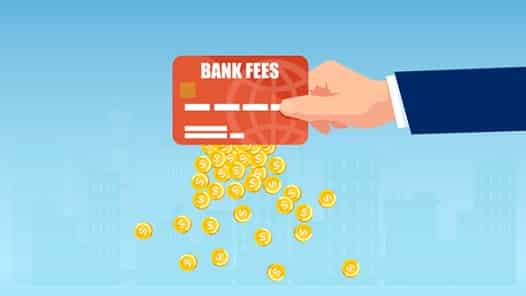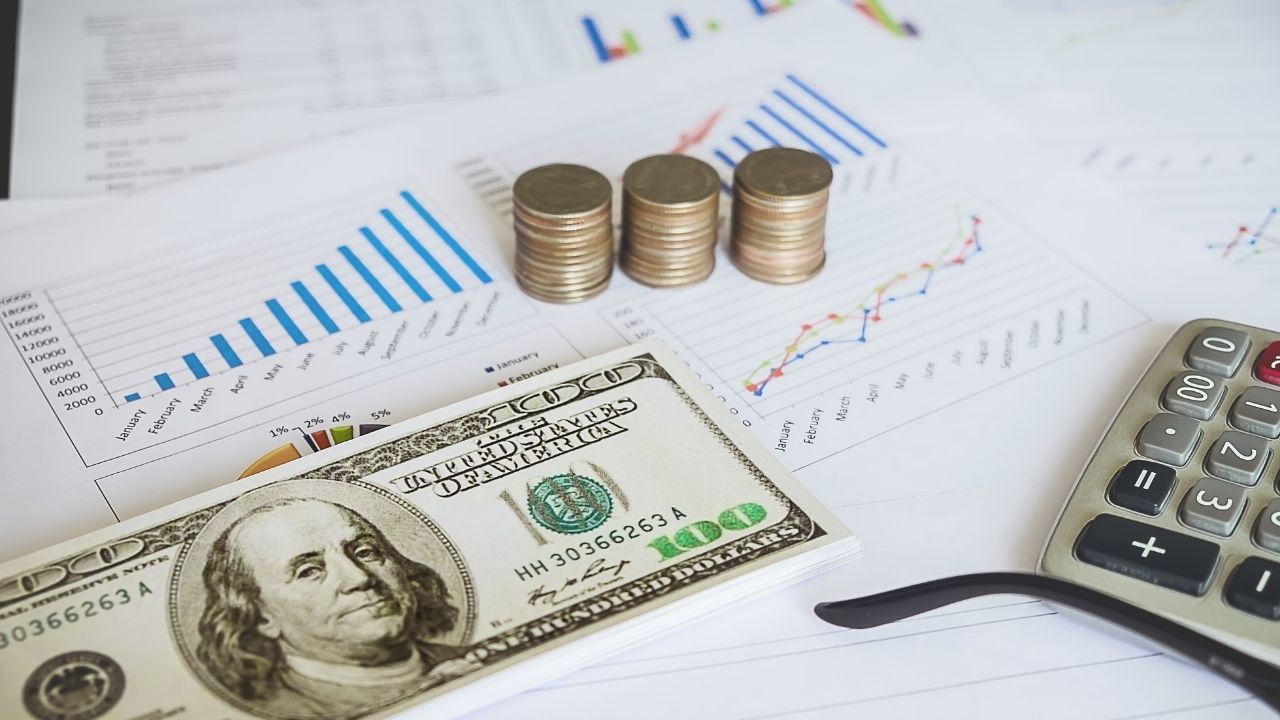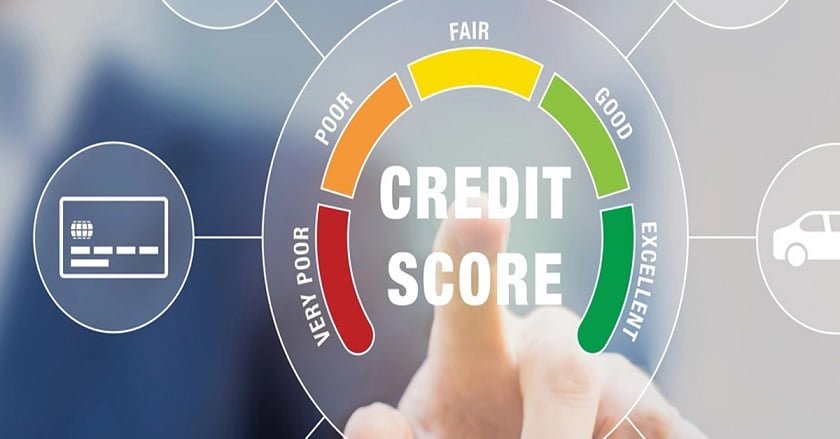How to get Bank Overdraft Fees Refunded 2023

Overdraft Fees: Banks charge overdraft fees when an account holder takes out more money than they have in their account. When a bank account’s available balance isn’t enough to cover a transaction, the bank pays the transaction for the account holder. This is called an “overdraft.” The bank will then charge a fee for the overdraft, which is usually a flat fee per transaction or a daily fee based on how many days the account stays overdrawn.
Overdraft fees can be a big problem for people who live from paycheck to paycheck or have a small income. Account holders should know their bank’s overdraft policies and fees and keep track of their account balances to avoid overdrafts and the fees that come with them. Many banks offer ways to protect against overdrafts, like linking a savings account or credit card to a checking account. These options may come with fees, though, so you should think about them carefully.
How much do overdraft fees cost?
The cost of overdraft fees varies depending on the bank and the specific account. Generally, overdraft fees are charged as a flat fee per transaction or as a daily fee based on the number of days the account remains overdrawn. Here are some examples of typical overdraft fees:
| Bank | Flat Fee per Transaction | Daily Fee | Maximum Number of Fees per Day |
| Bank of America | $35 | $10 | 4 |
| Wells Fargo | $35 | $15 | 3 |
| Chase | $34 | $15 | 3 |
| Regions | $36 | $8 | 6 |
| Citibank | $34 | $10 | 4 |
| PNC Bank | $36 | $7 | 4 |
| Capital One | $35 | $35 (charged on the 5th consecutive business day) | 4 |
| TD Bank | $35 | $20 | 5 |
| US Bank | $36 | $36 (charged after 4 consecutive business days) | 4 |
It’s important to note that these fees are subject to change and may vary based on the type of account and other factors. Be sure to check with your bank for the most up-to-date information on their overdraft fees.
How to get out of overdraft fees
Most of the time, banks decide whether or not to waive overdraft fees, but here are some things you can do to try to getting overdraft fees waived:
- Call, email, or go to your bank to explain what’s going on and ask that the overdraft fees be waived. Be kind but firm, and give any information or proof that backs up what you want.
- If there were special reasons for the overdraft, like a medical emergency or an unexpected expense, you should tell the bank about them. If they know what’s going on, they might be more likely to waive the fees.
- Show the bank how you have managed your account in the past. For example, if you have rarely or never overdrawn your account in the past, this is something you should stress to the bank. If you are a good customer, they may be more willing to waive fees.
- If the bank won’t waive all of the fees, try to talk to them about lowering the amount. As a sign of goodwill, banks will sometimes agree to waive or lower fees.
- If you can’t get the fees waived or lowered, you might want to switch banks to one that has lower fees or better customer service. Before you switch banks, make sure you do your research to make sure the new bank meets your needs.

Remember that the best way to avoid overdraft fees is to keep a close eye on your account balance and try not to go overdrawn as much as you can. Many banks have tools and alerts that can help you keep track of your account balance, so make sure you use them.
How to get overdraft fees refunded by Bank of America?
Bank of America has a $35 fee for going overdrawn. Even though it said that BoA would cut its overdraft fee from $10 starting in May 2022, it doesn’t look like that has happened yet. Since different banks have different rules about what to do when you go overdrawn. At BoA, overdraft fees include both overdraft item fees and non-sufficient funds (or NSF: Returned item) fees.
Follow these steps to get Bank of America to pay back overdraft fees:
- Check how your account is being used: Start by looking at what you’ve done with your account to figure out why you’re getting overdraft fees. Check to see if your account went over because of a mistake or a charge you didn’t expect.
- How to talk to Bank of America: You can talk to Bank of America by calling, chatting online, or going to a branch near you. Explain what happened and ask to get the overdraft fees back. Be
Kind but firm, and tell them why you think the fees were set too high. If you need to, ask to talk to a manager.
- Give proof: If you have proof that backs up your claim, such as proof of an error or a charge you didn’t expect, give it to Bank of America. This can help your case and make it more likely that you’ll get your fees back.
Be persistent. Don’t give up if your first request for a refund is denied. Keep calling Bank of America and bringing the problem to their attention until you get a satisfactory answer. To get a solution, you may need to talk to more than one representative or supervisor.
If you can’t get Bank of America to refund the overdraft fees, you might want to file a complaint with the Consumer Financial Protection Bureau or the office of the attorney general in your state. These groups can look into the situation and might be able to help you get a refund.
Remember that each bank has its own rules and procedures for how to handle overdraft fees. Make sure you know the rules and fees of your bank so you don’t overdraw your account in the future.
How to get overdraft fees refunded to wells Fargo?
Wells Fargo is an American bank based in San Francisco, California, with offices across the United States. Wells Fargo is the world’s fourth-largest bank in the US by total assists.

Wells Fargo Overdraft Policies
- General Overdraft Fee: $35.
- Overdraft fees can cost up to $105 per day.
- Overdraft Rewind Service: Your direct deposit could help you get back the overdraft fees you paid yesterday.
Wells Fargo will usually turn down your daily transactions, like ATM and debit card transactions, if your bank doesn’t have enough money. However, they will still let you pay your bills automatically. At the same time, Wells Fargo charges $35 per overdraft every time the bank pays an overdraft. There is a limit of 3 overdraft fees per day, so if you keep overspending, you won’t pay more than $105 per day.
Call Customer Service at the Bank.
Most banks will not charge you an overdraft fee if this is your first time going over. They want to keep you as a customer. You can call (800) 869-3557, Wells Fargo’s customer service phone number and ask for it.
Even if you have done this before, you will need some tips to get through it. Here are some suggestions for the call:
- You will have to talk about your complaint and give a clear explanation of what happened.
- You will have to show Wells Fargo that you are a good customer and want to stay with them.
- Be kind and strong.
How to Avoid Wells Fargo Overdraft Fee?
Here are some tips from Wells Fargo on how to avoid overdraft fees:
Have the plan to protect against going over
Wells Fargo has an overdraft protection plan that lets you link your checking account to a savings account. This way, if your checking account doesn’t have enough money, Wells Fargo will let you do the transaction by using money from your savings account. But this service will charge you a single daily fee of $12.50 per transaction, which is less than an overdraft fee of $35 per transaction that goes overdrawn.
Set up direct deposit
When you set up direct deposit, your paycheck will go straight into your Wells Fargo account. This is a convenient way to avoid other Wells Fargo bank fees.
Put in place alerts
You can set up Wells Fargo bank to send you an email or text message when your account falls below a certain amount of money in the bank account you chose. This setting will remind you to do something when your bank account is getting low so that you don’t go overdrawn.
How to get overdraft fees refunded chase?
Standard Chase Overdraft Fee: $34. Chase’s standard overdraft policy is to charge you a $34 insufficient funds fee per item if it pays for you unless your Chase account balance is overdrawn by $5 or less at the end of the business day or the item is $5 or less.
Chase’s daily overdraft fee cap is $102. Chase Insufficient Funds Fees can cost up to $102 per day, which is the same as three items per day.
For overdraft fees refunded to chase we are calling Chase bank customer service phone number is +1 (800) 935-9935.

If calling the bank manager didn’t work, write to them.
Use this number to reach the Chase manager: 1-800-242-7338
Send an email to customer service at Chase: You can use the Secure Message Center if you log in to Chase OnlineSM.
Send this letter to the CEO of Chase:
Jamie Dimon
270 Park Avenue
New York, New York 10017-2070
USA
How to Avoid Overdraft Fees at Chase?
There are a few ways to avoid the Chase overdraft fee:
- Getting Overdraft Protection from Chase. You can join as long as you have both a savings account and a checking account. This way, you won’t have to pay the $34 fee again in the future.
- Getting notifications to work. You can sign up for a service from Chase that will send you an SMS or email when your Chase bank account balance falls below a certain level. This helps you know where you stand so you know how much you can spend and how much you can’t.
What to do if Chase charges you an overdraft fee?
So, if Chase has charged you an overdraft fee. First of all, don’t freak out. We suggest that you first call the bank and ask if they will take it off. Most of the time, they’ll let you off the hook the first time if you don’t have many overdrafts on your account.
Is Overdraft Protection a Service Offered by Chase?
Yes! They will transfer the required amount to your checking account, for instance, if you have enough money in savings but not enough in your checking account to make the transaction.
You must have both a checking and a savings account with Chase to do this, and your savings account must contain sufficient funds to cover the transaction’s costs.
How Much Does an Overdraft Fee Cost at Regions?
A standard overdraft fee at Regions costs $36 per paid overdraft item.

Fees Related to
Several things could happen if you overdraw your account.
- Overdraft fee
- Fee for transferring overdraft protection
- Fee for returned items
Overdraft fee
Most of the time, overdraft fees happen when you don’t have overdraft protection and the bank lets you go overdrawn on checks, ACH transactions, and some types of withdrawals and debit transactions.
Fee for transferring overdraft protection
Most of the time, overdraft protection transfer fees happen when you sign up for it, have a qualified linked account, and the bank lets you go overdrawn. Instead of a $36 overdraft fee, Regions will charge you between $10 and $12 for an overdraft protection transfer.
To use overdraft protection, you must link a qualified account so that if you go overdrawn, the bank can move money from one account to the other. Accounts that qualify are:
- Checking accounts from Regions
- Regions with eligible savings accounts
- Accounts on the money market
- Loans of money
- Accounts for credit cards
Fee for returned items
A returned item fee, also called a “non-sufficient funds” (NSF) fee, is charged when you try to buy something but don’t have enough money in your account to pay for it. Instead of paying for it, the bank will turn down the transaction or send it back unpaid. Each item that is returned without being paid for costs $36.
You can reach Regions Bank customer service in several ways:
- Call their toll-free customer service number at 1-800-734-4667.
- Send them a message through their online contact form at https://www.regions.com/help/contact-us.
- Visit a Regions Bank branch in person and speak with a customer service representative.
Conclusion
In the end, overdraft fees can be a big financial problem, but there are things you can do to try to get them waived. Start by getting in touch with your bank as soon as possible and explaining what happened. Show the bank your account history and try to bargain with them to see if they will waive or lower the fees. Remember to keep a close eye on your account balance and try not to go overdrawn as much as possible to avoid having to pay overdraft fees in the future.



